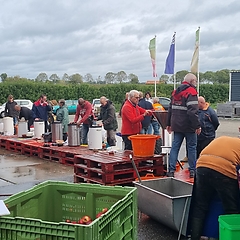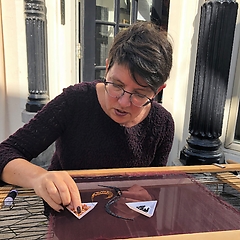The cane chair weaver renews and mends chair seats that are made of natural materials, like rushes, rattan and cane. The weaving technique of a cane chair weaver is somewhat comparable to common weaving. By weaving the cane, a honeycomb-like hole pattern is formed. This pattern is applied in six layers. Traditionally much weaving is done with rushes. Cane, the outer bark of rattan, is most frequently used nowadays. Because the work is done with various materials, there are also different techniques. To be able to work with them, the rushes must be damp. The craftsman puts the rushes on a cloth, pours water over them and subsequently wraps them in the cloth. The following day the rushes are flexible enough to smoothly work with them. The caning begins with taking a few rushes and twining them like a rope. Four to six hours are needed to make a chair seat.


